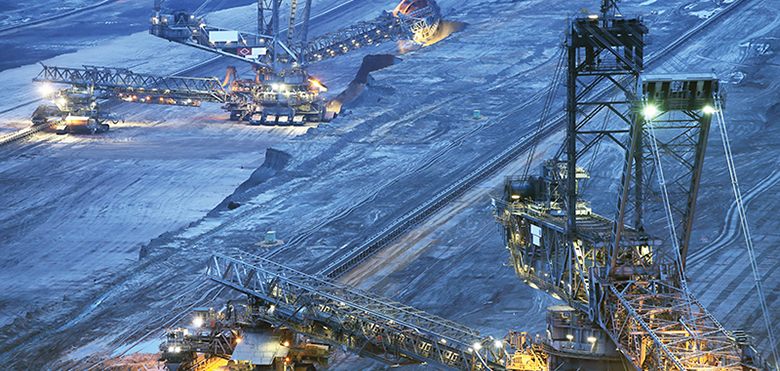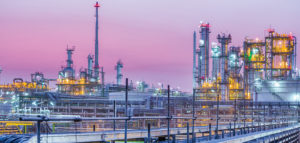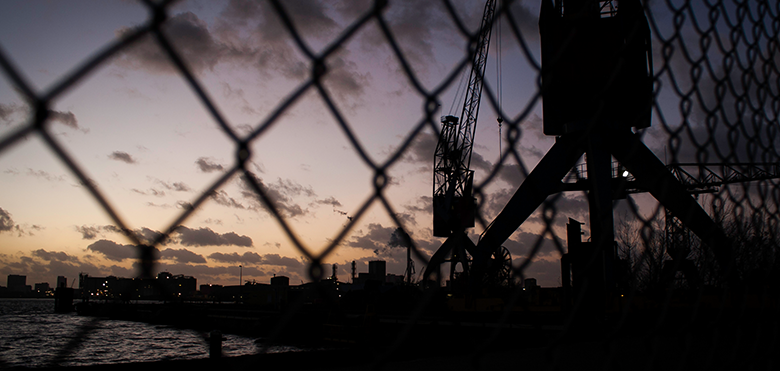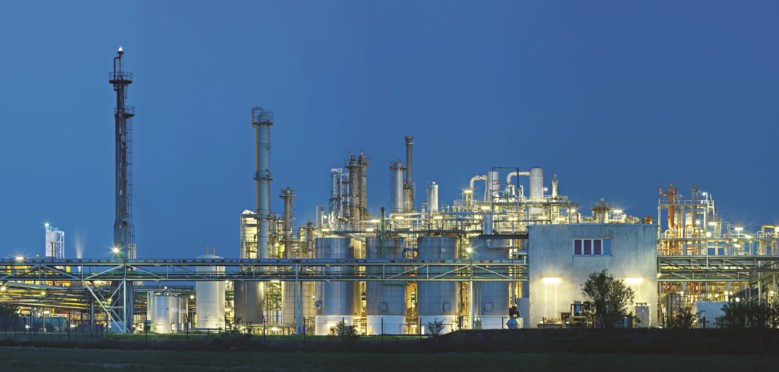Meeting mining’s challenges with video surveillance
In terms of tough working environments, there aren’t many more challenging than mining. And the overriding priority for the operators of mines is the safety of their employees. Clearly, no employer wants their workers’ health and wellbeing risked any more than is absolutely necessary in a potentially dangerous working environment. The vast majority of mine operators are focused on the goal of zero loss of life or injury.
Additionally, in a highly-regulated sector like mining, any incident, however small, will need to be thoroughly investigated and likely cause some elements of the mine’s operations to be stopped, which will always be costly. Furthermore, if breaches of regulation are found by enforcement agencies, fines can be severe and in extreme cases the mining organization’s license to operate could be affected. Mining operations can also be disrupted by equipment failure, with post-incident repairs and replacement again causing costly downtime: any opportunity for proactive maintenance is welcomed.
Video surveillance – and evermore intelligent related technologies – is now being applied to every aspect of mining safety, while also being used to improve operational efficiency and enhance the security of mining operations from the perimeter to the rock face.
Poor visibility in mining: dealing with darkness and dust
The layman’s image of a mine would commonly be of a warren of poorly-lit tunnels deep underground. While not all mines involve underground work – though many do – poor visibility can nonetheless be a common challenge. In areas of poor visibility, technologies designed to deal with low-light or even near darkness are now commonplace in surveillance cameras.

Advance IR solutions allows images to be captured in complete darkness, with cameras using integrated IR illumination; technologies that provides full-colour, high-resolution video in extremely low light; while wide dynamic range can deliver detailed images in challenging lighting conditions where scenes include both very bright and dark areas. Thermal cameras and analytics also bring benefits when visibility is partially or totally obscured.
In the context of mining, however, visibility can not only be affected by a lack of light. Where tonnes of earth are being excavated, moved and processed, an inevitable by-product of the mining process is dust. It’s something that can not only affect visibility, but has implications for the mining operation as a whole.
Every mine creates dust, and monitoring dust clouds is important for a number of reasons. Mining operations have a responsibility to surrounding communities, not least because these communities are likely to provide most of the mine’s employees. Dust clouds created and blown towards houses, schools and businesses cause more than simply annoyance – they pose a genuine risk to the environment and health. And, in an environment where heavy machinery and vehicles are commonplace, the affect of dust of operators’ visibility can create an additional hazard.
Cameras equipped with deep learning-based analytics applications can now detect and monitor a much greater variety of objects, including dust clouds, allowing remedial action to be taken, or the proactive warning of local communities and workers.
Managing the risks of mining machines
An additional safety risk posed in the mining industry which can be compounded by poor visibility, comes from the sheer size of the machinery used in mining operations. Mining shovels – the machines used to excavate large quantities of soil and rock – are enormous pieces of machinery. Weighing up to 10,000 tonnes (11,000 tons), the buckets alone can have a capacity of up to 130 cubic metres (170 cubic yards), about the same as 13 concrete mixer trucks. Moving around these, the biggest haul trucks in mining – used to transport soil, rock and minerals around the mining operation – can weigh more than 500 tonnes (550 tons) when loaded, and stand at more than seven metres or 22 feet high. They’re the size of a house, but can move at 60 km/h (40 mph)…
 The risks of operating such huge machinery are obvious. These risks relate to both the safety of mine employees and – at a cost of millions of dollars and as an essential part of mining operations – the implications of any accident between vehicles and machinery. Disaster management units will close relevant parts of operations to investigate any incidents, and the cost to fix or replace damaged machinery can be significant.
The risks of operating such huge machinery are obvious. These risks relate to both the safety of mine employees and – at a cost of millions of dollars and as an essential part of mining operations – the implications of any accident between vehicles and machinery. Disaster management units will close relevant parts of operations to investigate any incidents, and the cost to fix or replace damaged machinery can be significant.
As such, the use of onboard cameras – ruggedized to deal with the nature of mining – is increasingly common to aid operators and drivers with awareness and safety. In addition to visual cameras, onboard cameras equipped with thermal imaging can be an invaluable aid when visibility is obscured by the dust inevitably created in hauling material from the ground. Body worn cameras also have potential, particularly for training and post-incident investigation.
Innovative applications of video analytics in mining
Recent years have seen an explosion in the capabilities of video surveillance analytics, with use cases in almost every industry sector, and mining is no exception. With deep learning now available in surveillance cameras, object recognition capabilities are becoming much more accurate. In mining these could be employed, for instance, to ensure that workers are wearing the correct personal protective equipment before entering the mine or when moving around the site.
In addition, people counting analytics show great potential in ensuring that certain areas of the mine don’t become dangerously overcrowded, with ruggedized door stations, intercoms and network audio speakers used for communication and alerts.
Beyond safety: operational efficiency and security in mining
While safety is, rightly, the number one priority for mine operators, video surveillance has an important role to play in two other key areas: operational efficiency and security.
Mining is a connected process, and any interruption will have costly knock-on effects. Prevention is always better than cure, and proactive maintenance ahead of failure is optimal. Take conveyor belts as an example. Critical in removing soil, rock and minerals from the mining face, any belt failure will immediately stop operations.
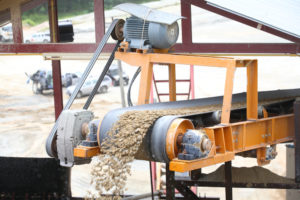
Video cameras placed at key points along conveyor belts can be linked to load sensors – an overloaded conveyor belt is more prone to tearing – alerting operators when load levels exceed limits and allowing visual verification. However, creating high-quality images in situations where the movement of structures and vibrations can be a real challenge. In these conditions, image stabilization technology will ensure consistently clear video. Temperature reading cameras can also be used to monitor, for example, electrical cables and sub-stations, giving early warning of issues and even automatically tripping the system and shutting equipment down before a catastrophic failure occurs.
While perhaps regarded as the more traditional role of surveillance cameras, security remains a critical area of focus for mining operators. Mining sites can be huge, with perimeters that are impossible to monitor physically. Powerful pan, tilt and zoom (PTZ) video surveillance and thermal cameras play an essential role in accurately identifying breaches of the perimeter, reducing false alarms and prompting an appropriate response.
Mine shafts that have been recently closed are particularly attractive to criminals, given they can still contain much of the valuable machinery and infrastructure used in the previous mining operations, in addition to offering the enticing potential that valuable minerals are still salvageable. Again, video surveillance, thermal and perimeter protection technologies can be employed to alert operators to intrusion. And even if many miles away, when combined with network audio speakers, the ability of operators to engage intruders directly with live audio warnings is a highly effective deterrent to criminal activity.
The right camera in the right place at the right time, with no barriers
The multiple functions and formats of modern video surveillance cameras, allied to thermal, low-light capabilities and smart analytics, means that there’s a solution for every aspects of a mine’s operations. And it’s not only the functionality that is designed for the unique demands of the mining sector. Ruggedized cameras and those using stainless steel casings can withstand both the rigors of mining operations themselves and the harsh weather conditions often found in the locations where mining takes place. Extreme heat and cold, wind, rain, ice, sand and dust, cameras are tested and certified to the toughest industry standards.
Finally, in specifying a solution, it’s important that potential issues with technical infrastructure don’t prohibit mining operators seeing the benefits of modern surveillance technology. In environments where bandwidth and storage can be almost as precious as the commodities being mined, video compression technology such as Zipstream come to the fore, preserving the detail of video footage while lowering bandwidth and storage needs by an average of 50%. And where integration between devices and control systems is critical, using products based on open standards delivers additional advantages.
Ultimately, in meeting the safety, operational and security needs of the mining sector, video surveillance plays a more comprehensive and connected role than ever before. Are you extracting its full potential?

